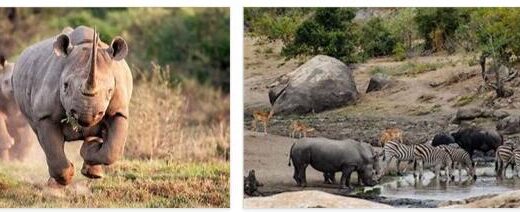Lesotho Government and Politics
But even these steps were not enough to satisfy Pretoria, and on January 20, 1986, General Justin Lekhanya – commander of Lesotho’s paramilitary forces – conducted a coup that brought Leabua Jonathan’s government to a standstill. It was replaced by a Military Committee led by Lekhanya himself.
In 1988, Lesotho’s migrant workers in South Africa sent back over $ 350 million to Lesotho – equivalent to 5 times the country’s export earnings.

In March, the military dictatorship sent King Moshoeshoe into exile, accusing him of hindering the country’s democratization. His son, Bereng Mohato Siisa, now ascended the throne as Letsie III. Following a general strike among the armed forces due to low wages, a new military coup on April 30, 1991, brought down Lekhanya’s government and a new government council was installed under the leadership of Colonel Elias P. Ramaema.
In 1991, the South African government cut transfers from migrant workers. In May, a demonstration against foreign interference in the country’s economy ended with 34 killed and 425 detained.
In 1993, a new constitution made the king the head of state without gaining legislative or executive rights. The July parliamentary elections gave BCP all the seats in parliament. With a loan from the IMF, in August privatization of the semi-state companies began.
Erosion now affected 58% of the country’s low-lying soils. Two-thirds of the land belongs to migrant workers, but is exploited by landowners with no interest in protecting it. The water from the country’s higher elevation – its main resource – was to be utilized through a hydroelectric project that would turn more rivers in the direction of South Africa in return for electricity. Project spending would run up to $ 2 billion.
Throughout 1994, low wages were the backdrop of armed clashes between rival military groups. The government’s plan to integrate the BCP’s armed branch into the country’s military led to the abduction and killing of the country’s finance minister – perpetrated by disgruntled soldiers.
In August, the king dissolved the government and parliament. The protests in front of the palace were turned down by soldiers and police, and at least 4 were killed. Internal Republican opposition and international pressure forced Letsie III to abdicate in favor of his father, King Moshoeshoe II, who was formally deployed to the throne in January 1995.
The same year, drilling was completed for the tunnel that was part of a major project to supply the Baal River’s source in South Africa with Lesotho water from 1997. The project was funded by the World Bank.
In January 1996, the king perished in a traffic accident. A month later, Parliament appointed Letsie III a new king. Four prominent opposition politicians were accused of treason in March. They should have planned a coup against the government from September 1995 to February 1996.



